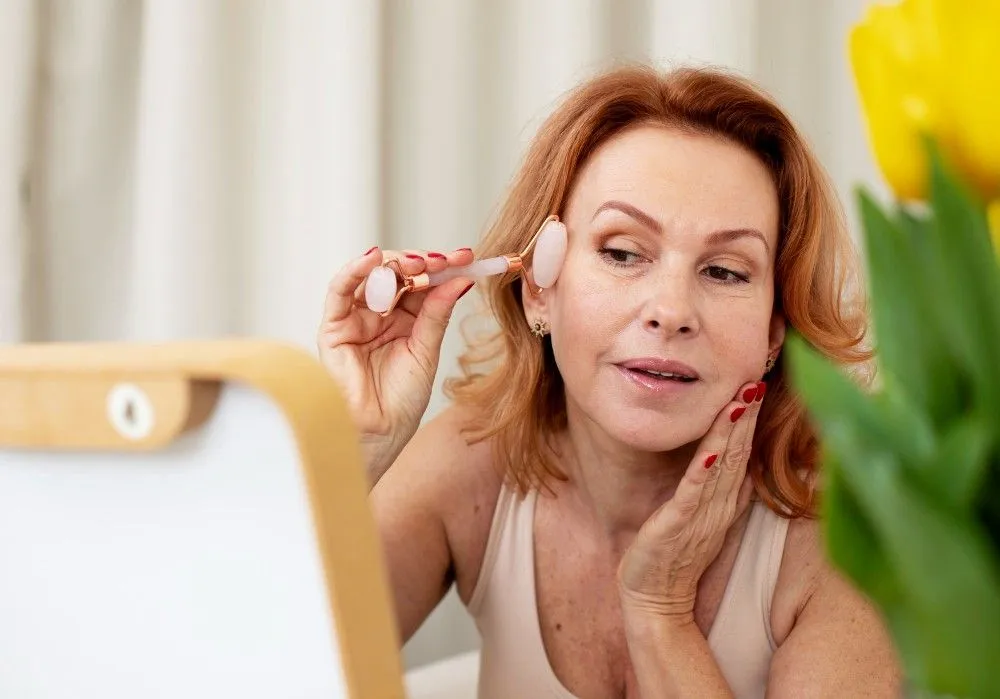Fighting tightness, flakiness, and that unyielding lack of shine can seem like a never-ending fight for people with dry skin. A regular, considerate care schedule is frequently the key to smooth, supple skin, while genetics and surroundings can play a part. Your skin's barrier may be mended and its natural glow returned with proper hydration on the inside as well as the outside. Speaking with a skin brightening treatment expert about chronic disorders may guarantee that you receive a personalized diagnosis and the ideal skin care for your requirements.
1. The Moisture Lock: Master Your Application Technique
Applying your lotion to damp skin quickly after taking a bath or washing your face is one of the easiest yet most effective tips. The moisturizer works as a barrier to seal in that valuable water and make it easier for your skin to receive when it is still somewhat damp. To avoid irritation and keep wetness, gently pat your skin with a cloth rather than rubbing it dry. Throughout the day, this little adjustment can greatly improve the moisture levels of your face.
2. The Barrier Brigade: Choose Your Moisturizer Wisely
Not every lotion is made equally. Thick, rich creams and ointments work better than watery products for extremely dry skin. Seek out goods with powerful barrier-repairing ingredients like shea butter, petroleum jelly, dimethicone, or glycerin. By making a protective barrier over the skin, these ingredients stop water loss and promote the healing and hydration of the deeper layers. Studies have also proven that natural oils like sunflower seed oil and coconut oil are great, light cleansers.
3. The Gentle Cleanse: Rethink Your Bathing Habits
Long, hot baths may be comfortable, but they drain the skin's natural oils, making it more dry. Use warm, not hot, water and keep baths and showers to 5–10 minutes to protect your skin. Additionally, pick a mild wash that doesn't have any smell and doesn't damage your skin's natural defenses. Dry, delicate skin can be especially damaged by strong soaps and deodorant body washes.
4. The Climate Control: Boost Your Environmental Humidity
Your skin and the air might get dehydrated due to home heating and cooling systems. Using a fan in your house, especially in your bedroom at night, is an easy fix. By keeping the humidity level at about 60%, you can return moisture to the outermost layer of your skin and avoid the tight, itchy feeling that comes with dry surroundings.
5. The Comfort Wardrobe: Wear Skin-Friendly Fabrics
One unseen cause of skin pain may be your clothes. Rough materials like wool and tight clothes can hurt dry skin by rubbing against it. Choose soft, loose-fitting cotton clothing that doesn't rub against your skin and lets it breathe. During the warmer months, a layer of soft cotton underneath woollen clothing helps shield your skin from direct pain.
6. The Handy Helper: Protect Your Hands
Because we wash our hands frequently and are exposed to chemicals and water, our hands frequently show the beginning signs of dryness. Wear gloves when cleaning, gardening, or cooking to protect them. Maintain constant hydration by having a non-greasy hand cream on hand and using it after each hand wash for an additional layer of protection.
7. The Inner Glow: Hydrate from the Inside Out
Taking care of your skin is just half the fight. Hydrated, healthy skin starts on the inside. To maintain the natural moisture balance of your face, drink plenty of water throughout the day. Additionally, skin health can be helped by a diet high in omega-3 fatty acids and vitamins. Include foods that give the basis for strong, radiant skin, such as salmon, tomatoes, carrots, and blueberries.
Table: Quick Guide to Moisturizer Ingredients
|
Ingredient Type |
Key Examples |
Primary Benefit |
|---|---|---|
|
Occlusives |
Petroleum Jelly, Mineral Oil, Lanolin |
Seals skin with a protective barrier to prevent water loss |
|
Humectants |
Glycerin, Hyaluronic Acid, Sorbitol |
Attracts water from the air and deeper skin layers to hydrate |
|
Emollients |
Shea Butter, Jojoba Oil, Ceramides |
Smooths skin by filling spaces between skin cells |
8. The Soothing Soak: Try an Oatmeal Bath
An oatmeal bath can provide a great deal of comfort for overall dryness and itchiness. Colloidal oatmeal calms irritated skin because of its well-established anti-inflammatory and antioxidant properties. For a natural, skin-calming treatment, you can either prepare your own oatmeal bath solution or buy one already made by crushing plain oats into a fine powder and mixing them with warm water.
9. The Essential Shield: Protect Against Sun Damage
Your skin's ability to keep moisture may be hindered by sun exposure, which can worsen dryness and harm the skin barrier. Even on cloudy days, make it a practice to use a broad-spectrum, water-resistant sunscreen with an SPF of 30 or higher. This protects against the long-term drying effects of UV rays in addition to avoiding sunburn.
10. The Expert Touch: Know When to Seek Professional Help
It might be time to contact an expert if, despite your best efforts, you continue to experience severe, painful, or unpleasant dry skin. Sometimes, chronic dryness is a sign of a skin problem like psoriasis or eczema. This is the point at which speaking with Mumbai's top skin doctors becomes important. They can give you an exact diagnosis and suggest the best course of action for your skin, which can involve prescription creams, best skin treatment, or a complete management strategy that targets the underlying source of the problem.
लेखक





